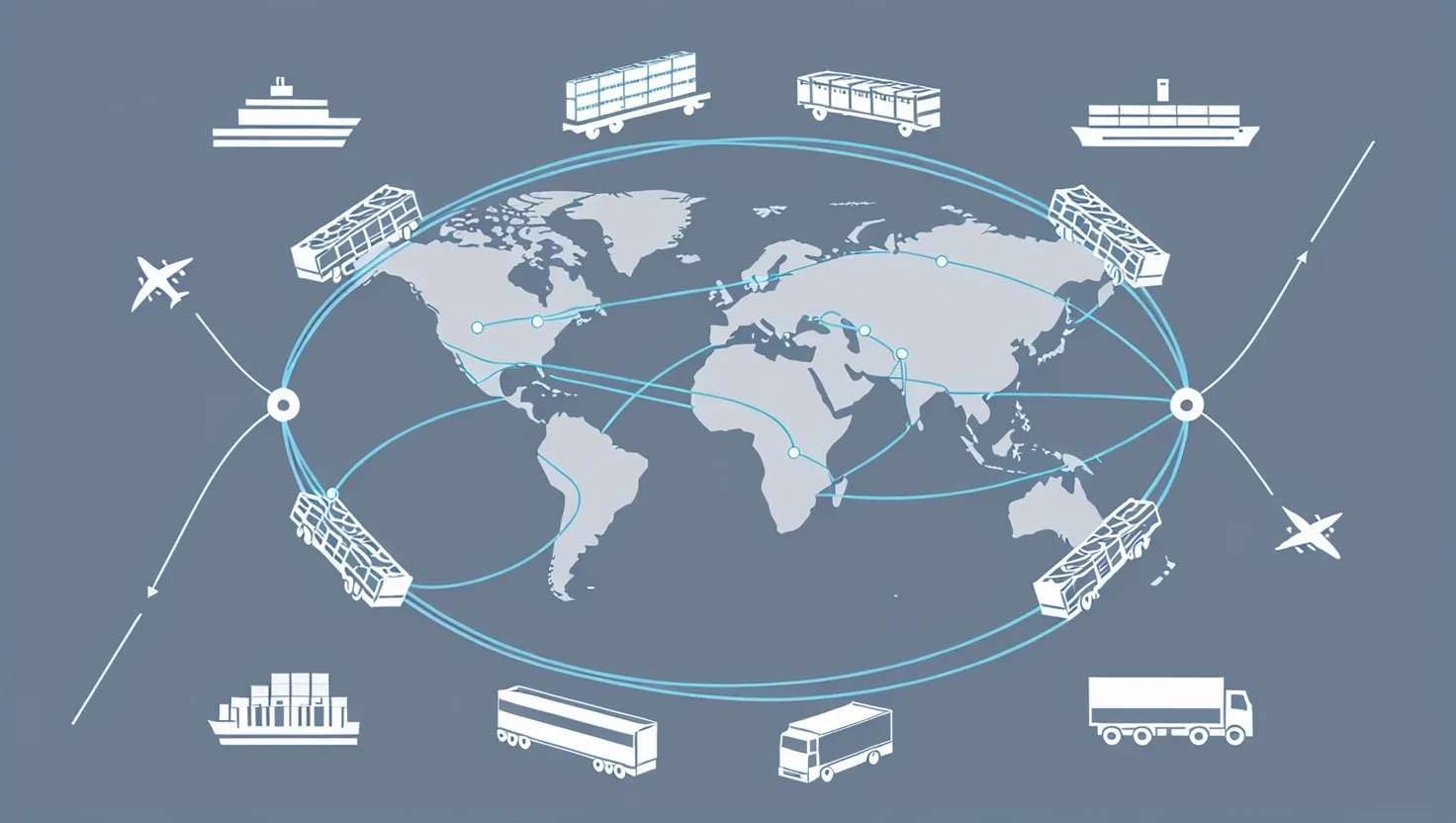If you ship or receive anything across borders, you’ve probably noticed how a small hiccup in one country’s transport system can suddenly ripple through the world. For many years, we all accepted holdups as part of the job, but I’ve learned it doesn’t have to be that way. Over time, working with companies in retail, automotive, and electronics, I’ve seen innovative fixes that turn chaos into predictability. Taming transportation bottlenecks sometimes feels like trying to rearrange traffic on a jammed highway. But you’ll be surprised how much progress is being made with approaches you might not expect.
Let’s consider the first tactic: multi-modal route diversification. Historically, manufacturers stuck to a primary transport mode—say, ocean shipping for cheap, bulk cargo, or air for time-sensitive goods. That’s changing: companies now regularly blend sea, rail, and air, pivoting between them on short notice as capacity or prices shift. I recall a conversation with a logistics manager who compared this adjustment to how airlines reroute flights when a storm hits a major airport: “We don’t just wait at the gate. We find where the sky is clear.” Maersk, for example, steered containers onto rail lines running deep into Europe when major ports clogged up, literally bypassing jams that held up competitors for weeks. This isn’t only for big shippers. Retailers with special Christmas rushes or electronics makers protecting crucial launch dates now use dashboards that track available capacity across multiple carriers in real time. They don’t always chase the lowest rate; sometimes, the “cost” of a delay is much greater.
“A bad system will beat a good person every time.”
— W. Edwards Deming
Next, let’s talk about port infrastructure partnerships. When everyone wants to use the same dock, waiting your turn can spiral into weeklong delays. Some firms have gotten smarter: rather than simply relying on industry relationships, they’re securing formal agreements with terminal operators for priority berthing and even specific equipment usage. Imagine calling ahead to reserve a table during the busiest night at a restaurant: that’s the gist. This isn’t just theoretical. Automotive companies have formed direct alliances with ports to guarantee cranes and trucks are available exactly when cars arrive. Instead of vehicles stacking up in holding lots, they get rolling on trucks within hours of docking. The beauty is that these arrangements benefit both sides: terminals smooth out their peak loads, while shippers get more predictable schedules. I’ve also seen third-party logistics providers offer “emergency unlock” contracts, where for a premium, you jump the line during crunch periods. There’s room for creativity here, and even mid-sized companies have found ways to pool their volumes to negotiate for shared berthing slots.
Have you ever booked a last-minute flight and been surprised by empty seats, even when the website said the plane was full? Traditional freight booking has the same mismatch: lots of moving trucks, ships, and planes with unused space, but shippers unable to tap in at short notice. Digital freight marketplaces are trying to fix this. With a few clicks, these platforms allow cargo owners to review available space across dozens of carriers, bid for it, or book instantly—just like an app-based ride-share for deliveries. This new transparency isn’t merely about cost: it’s about flexibility and resilience. I’ve heard electronics manufacturers recall how, during global chip shortages, being able to snap up underutilized lanes at odd hours kept assembly lines running while others waited for “their” trucks. What’s less appreciated is the data these marketplaces give you: knowing which lanes routinely have spare capacity, or where pricing dips precisely ahead of public holidays. One supply chain director told me it gave him more intelligence than any dashboard his old 3PL ever provided. Those who embraced these tools cut their emergency shipping costs by up to 15 percent and found ways to shift routine shipments onto less-congested routes, shaving days off lead times.
“Plans are nothing; planning is everything.”
— Dwight D. Eisenhower
Another piece that’s quietly revolutionizing supply chain reliability is strategic inventory positioning. For years, just-in-time inventory was treated like gold—you only pay for what you need, when you need it. But by placing small buffer stocks in regional warehouses, companies from fashion retailers to automotive suppliers suddenly found they could outmaneuver delays without breaking the bank. I remember Dell’s approach: when container backlogs snarled up Asian ports, their well-placed regional fulfillment centers in North America and Europe kept laptops heading out to customers regardless. It’s counterintuitive, but increasing inventory in the right spots can trim wasted effort and shrink total working capital, especially as real-time inventory systems help you avoid overstocking. It’s about using data to pinpoint which SKUs are most vulnerable to transport delays, and making sure a cushion is close to your most important markets. I usually advise starting with your highest-margin or most delay-sensitive products. Once teams see a measurable boost in on-time delivery—not to mention fewer customer complaints—it becomes easier to make the case for wider coverage.
All the best plans fall apart at the border if paperwork isn’t perfect. Customs clearance delays aren’t always about smuggling or misclassification—more often, it’s just an overwhelmed system dealing with complexity. Customs pre-clearance systems, which process documentation and approve shipments before trucks or containers reach the border, are a technological leap here. The latest advances use secure data transfer, digital signatures, and integration with port and government databases to minimize human handling. It’s not unheard of for border times to drop from days to just hours. Electronics makers, who ship sensitive parts across multiple borders, now swear by these systems to keep their production schedules reliable. I’d challenge you, if you haven’t looked into these solutions recently, to run the numbers: even a modest reduction in unpredictability at the border can translate into large downstream savings and, maybe more importantly, happier customers.
“The line between disorder and order lies in logistics.”
— Sun Tzu
The technology and operational challenges in all these approaches can’t be ignored. Moving to multi-modal routing or establishing port partnerships often runs into existing carrier contracts built for stability rather than flexibility. Integrating digital marketplaces and pre-clearance documentation with legacy IT takes time and, frankly, some headaches. I’ve witnessed teams struggle through the first phase only to see payoffs appear once the new systems are live and data flows are clean.
Where to begin? I always suggest a stepwise roll-out. Start by mapping your supply chain for your highest-value—or most pain-prone—product lines. Where are the delays, and what are the true costs to your customers and business? Pilot multi-modal routing with a small subset of orders. Test port partnerships in your busiest region, or run a digital freight trial during a seasonal rush. Place a buffer stock at a critical junction and monitor the changes in both cost and customer feedback. The point isn’t to transform your company overnight, but to build confidence in each method’s results—often, you’ll see a 25-40% cut in transit variability and service levels rise fast enough to win over skeptics. Set clear benchmarks: aim for higher on-time delivery rates, lower last-minute shipping premiums, and, where possible, quantify customer satisfaction changes.
Ever wonder if the cost is worth it? Imagine the alternative: blank shelves, angry calls, idle assembly lines. No one likes paying for emergency air freight because a container stalled at a port. Think back to how the world responded to unforeseen shocks—every lesson points to the same truth. Those who invested early in supply chain resilience didn’t just survive disruptions; they captured market share while competitors scrambled to catch up.
“Supply chains are the lifeblood of any economy. Without them, there is nothing.”
— Peter Drucker
That lifeblood doesn’t have to clog up every time the world twitches. The progress I’ve seen in supply chain strategy comes from rethinking what’s possible and daring to act before the next crisis. If you move quickly, use the right data, and tackle the biggest risks head-on, transportation bottlenecks become temporary bumps rather than the source of your worst headaches. Thinking like a futurist and planning like a chess player—I’d say that’s the new job description for anyone managing global logistics today. If you look at each part of your chain as a nerve center ready to adapt, you’re already two steps ahead.
So, which of these strategies would have the most impact on your business first? What’s preventing you from starting your experiment this month? I know from experience: the sooner you commit to solving bottlenecks creatively, the sooner your competitors will be wondering what your secret is.






